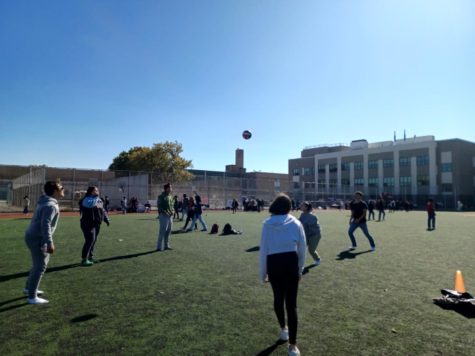How Does Online Learning Affect the Body?

Creative Commons License
A sound of an alarm blares through her room as Hillary Cheung, a senior, wakes up. She pulls herself out of bed and suddenly feels a sharp pain in her lower back. As she drags herself to her desk and she can’t help but think about going back to bed to rest her eyes for a bit. She squints her eyes as she enters the class zoom code because of the sudden brightness of her screen. The sensation of excessive aches and pains begin to worry some students at Francis Lewis High School. Because of the excessive use of technology and repetitive motion due to online learning, many students find themselves spending more time looking at a screen rather than resting them and their bodies feeling sore.
“I don’t have breaks in between my classes so when I wake up, my back would be very stiff and sore,” Cheung added.
During in-person learning, many students would be moving from class to class, have the opportunity to write down notes, and talk to their classmates. Meanwhile, at home, we are glued to our desks as we are constantly typing or quickly copying down notes because teachers scurry through the lessons, trying to get as much done as possible.
“I find myself typing very quickly and sometimes I feel like my hands are being overused,” Cheung complained. “Same as writing a long essay afterward.”
Ms. Kye, an English teacher at Francis Lewis High School has been feeling the same pain in her back while teaching all-day
“I’m sitting in my kitchen or living room [and sometimes when] I don’t have my work desk, I’m standing,” Kye responded. “It can be challenging to the body and mind.”
Carpal Tunnel Syndrome is a condition that can cause numbness, tingling, or weakness in your hand. Sometimes, constant repetitive movement can help contribute to this syndrome.
“My hand was sore and started to swell up,” Cheung responded. “At first, I didn’t know what was the cause of it. I thought I sprained my pinky finger but I noticed it coming back all the time.”
Not only has online learning been affecting students’ hands or posture, it has also harmed the eyes. Growing up in the newer generation, students are surrounded by technology wherever they go. Although technology can be very useful and convenient, many don’t realize the harm behind it. With many students’ screen time increasing, they are starting to experience blurry vision, headaches, and difficulty reading. The excessive use of technology can also affect sleeping patterns. Many students have also found themselves struggling to sleep at night or have painful headaches.
“I used to get really bad migraines from having to stare at my screen for long periods of time,” junior Abby Lee said. “I would have a hard time sleeping at night because of the pain.”
The reason why students are having eye problems is mainly because of the blue light from the electronic screens. Although blue light is everywhere, a significant amount of exposure may increase the risk of macular degeneration, which is an eye disease that can possibly cause vision loss. Some students have resorted to wearing blue light glasses that will filter out the blue light. However, not all blue light is harmful.
Although problems like these can’t be fully eliminated, students like Cheung have tried at-home remedies such as buying a back brace to help with the pain she’s been experiencing.
“Because I sit a lot now, my back is always hunched over so the back brace soothes me and it helps me maintain a good posture,” Cheung added.
Even if purchasing an item is not accessible, there are still many practical options that can help reduce the tension in one’s body.
“To overcome all this, I also exercise after class to get that blood flow moving,” Cheung concluded. “Even taking a walk after your classes can be helpful in the long run.”
A senior at Francis Lewis High School, Huang is the youngest child in her family who grew up in Bayside, Queens. Huang has always had a passion for producing...







